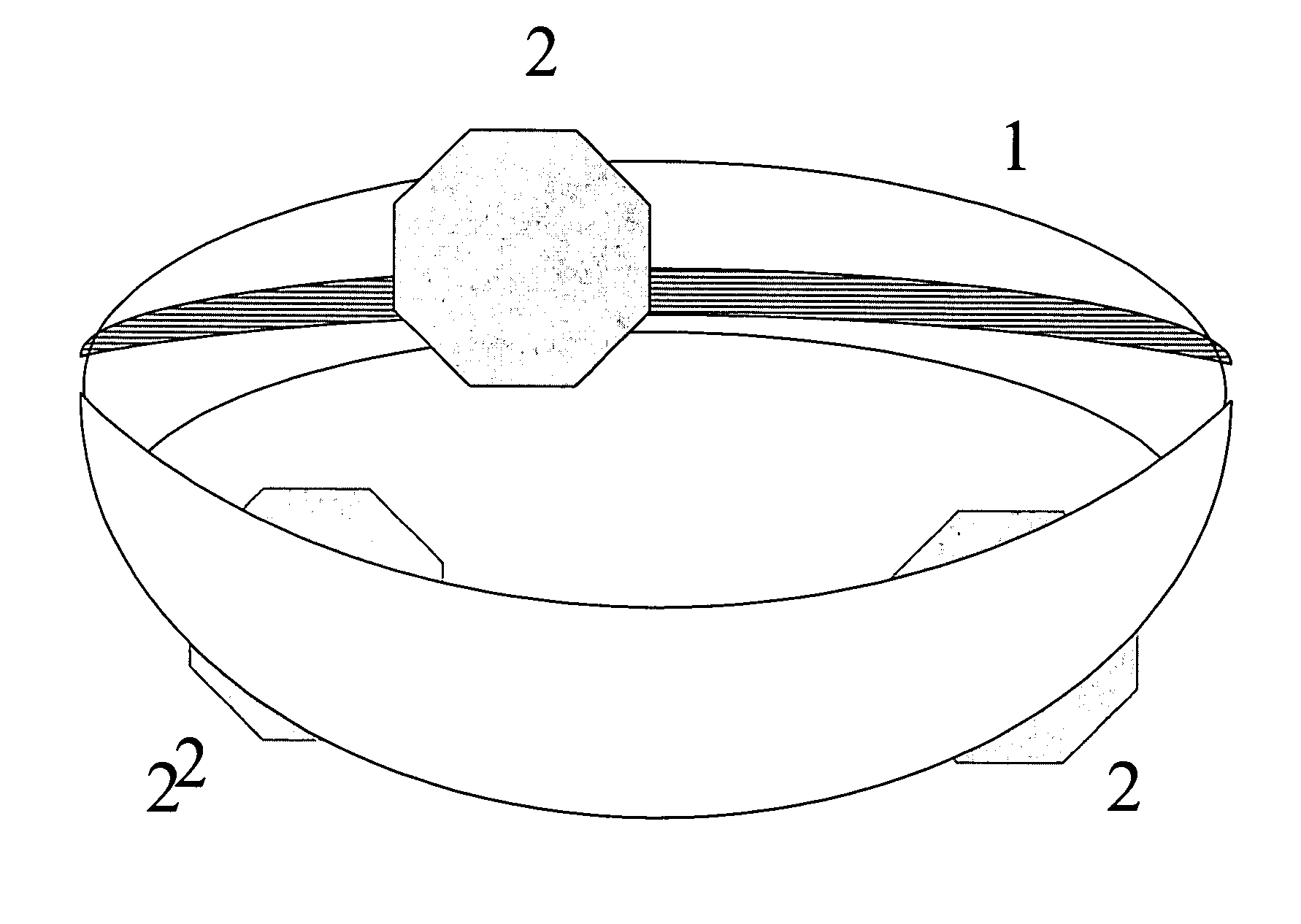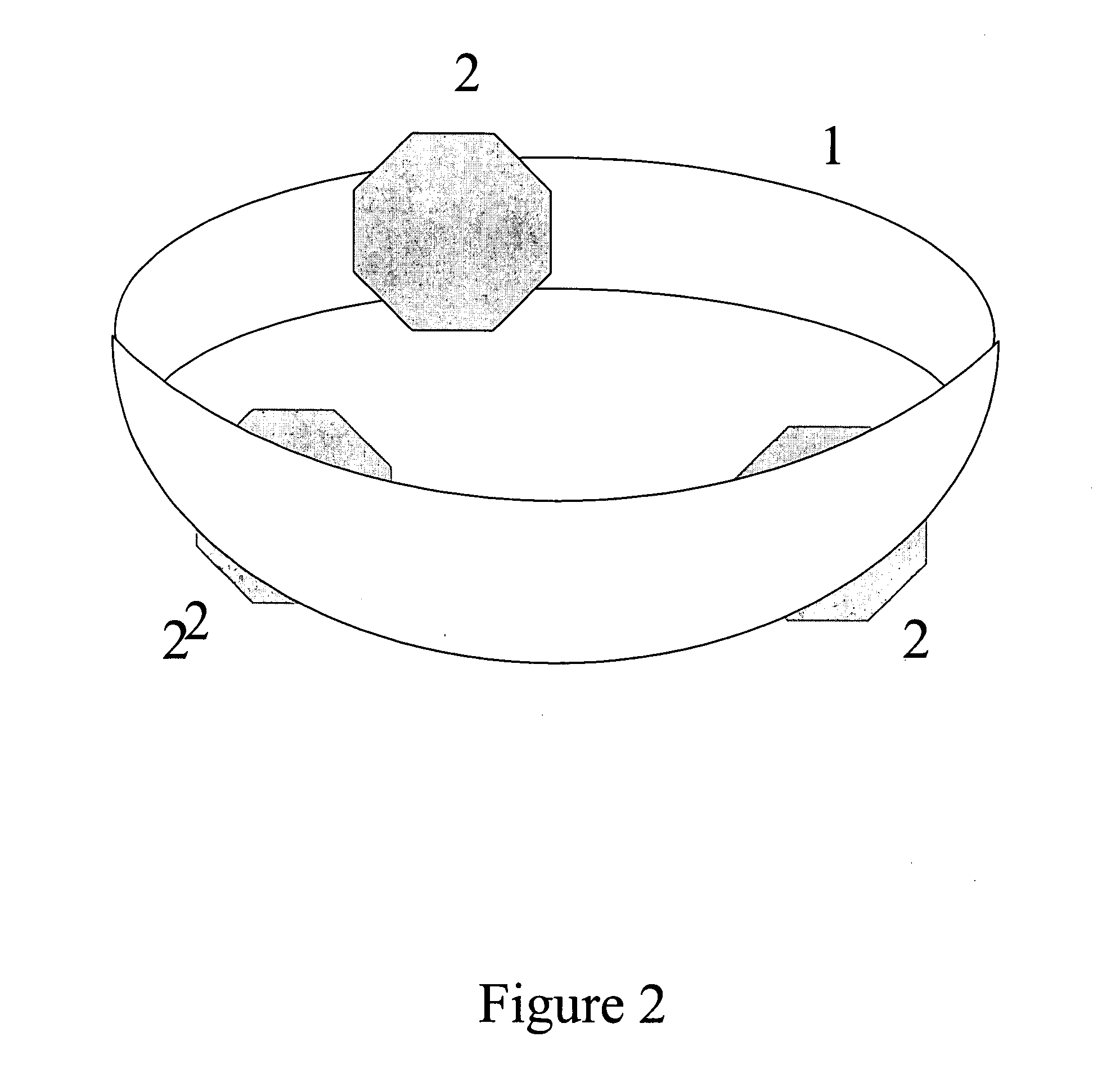Recreational bone conduction audio device,system
a bone conduction and audio device technology, applied in the field of waterproof recreational audio devices, can solve the problems of not being able to adapt to high-fidelity musical signals, not being able to maximize the sound quality of musical instruments, and the acoustic resonance of the ear canal being los
- Summary
- Abstract
- Description
- Claims
- Application Information
AI Technical Summary
Benefits of technology
Problems solved by technology
Method used
Image
Examples
Embodiment Construction
[0038] Referring now to the drawings, and more particularly to FIG. 1, the preferred embodiment of the waterproof recreational audio device is as a comfortable, light weight head band 1 worn by a user. The head band 1 in FIG. 1 can be worn with eye wear such as swimming goggles. The transducer 2 is located on the inside of the head band 1 to allow contact with the head of the user as shown in FIG. 2. Sealed, waterproof wiring (not shown) would be located inside the head band for connecting to a signal source.
[0039] One of the major advantages of the waterproof, recreational audio device is the tuning capability. The skull has many vibratory modes which are likely to be specific to an individual. The unique vibratory pattern of a head is a product of the skull and brain complex geometry, mass and other acoustic properties. The listener compensates for poorly propagating areas of the skull by moving the transducer 2 around the head until optimal sound quality is obtained. Placement at...
PUM
 Login to View More
Login to View More Abstract
Description
Claims
Application Information
 Login to View More
Login to View More - R&D
- Intellectual Property
- Life Sciences
- Materials
- Tech Scout
- Unparalleled Data Quality
- Higher Quality Content
- 60% Fewer Hallucinations
Browse by: Latest US Patents, China's latest patents, Technical Efficacy Thesaurus, Application Domain, Technology Topic, Popular Technical Reports.
© 2025 PatSnap. All rights reserved.Legal|Privacy policy|Modern Slavery Act Transparency Statement|Sitemap|About US| Contact US: help@patsnap.com



